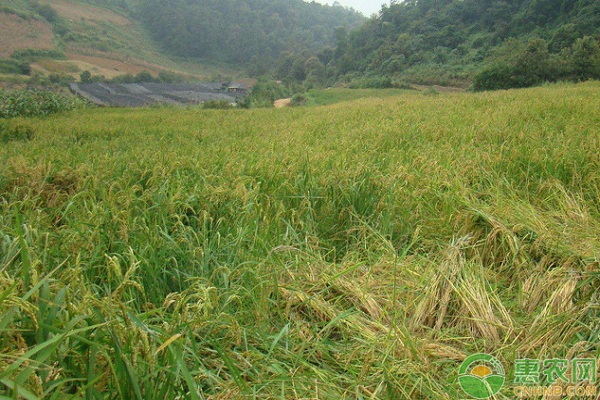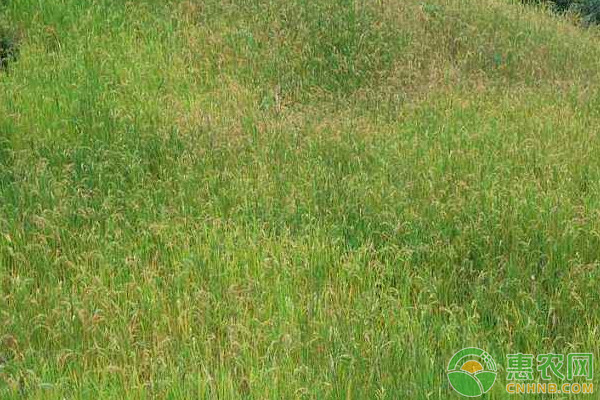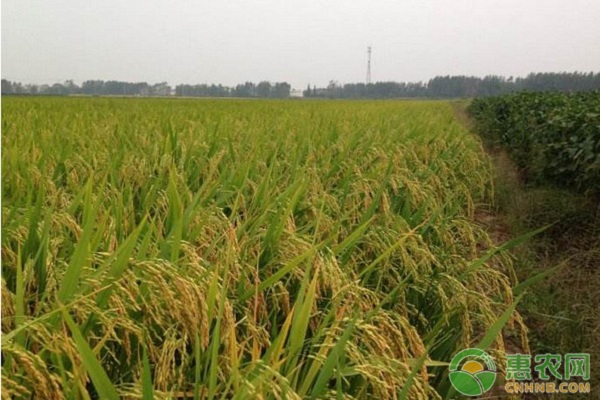How to cultivate land rice? Ludao is actually a dry rice. It is a kind of rice that can grow in the waterless layer. It is planted in the north and south of China. Today, I will talk to you about the binary cultivation techniques of land and rice.

1 preparation for land preparation
Dry land requires timely preparation, fine grounding, and the depth of the tillage layer is more than 20cm, and the soil is loose and breathable. The dry land where the land rice is planted needs to be prepared in December of the previous year (that is, after the harvest of the small spring crop). In the early spring of next year, we will plow and turn weeds at the right time. It is best to plant plots of land crops such as legumes and alfalfa.
2 Choose excellent varieties
Develop a reasonable variety layout and matching plan. The first is to choose a good combination of varieties. According to the actual situation, the land-rice varieties mainly use the local good-breeding stems, such as disease resistance, anti-early, resistant, high-yield, high-yield, high-quality, high-quality, high-yield, high-yield and adaptable hybrid combinations. Huang Dan 892 or Club No. 4.
3 timely and reasonable planting
Before seeding, the seeds should be properly treated. In order to improve the germination rate and germination potential, proper sun-dried seed should be carried out. Generally, it should be sown for 1 to 2 days in sunny days, and should be diligently turned, sun-dried, and sun-dried during drying. Grain breaking.
3.1 sowing time
Upland rice and maize should be planted at the same time, but the sowing date should be determined according to the altitude.
First, the cold and cool area above 1 600m above sea level, before and after the thrilling festival (before March 10th);
The second is the warm and cool mountainous area and the semi-mountainous area with an altitude of 1400 - 1 600m. Planting around March 20;
The third is a warm hilly gentle slope at an altitude of 1 200-1 400m, planted at the beginning of April;
Fourth, the low-calorie valley area below 1200m above sea level is planted before the end of April.

3.2 Seeding methods and specifications
In order to ensure a reasonable group structure, according to the actual land plot, where the width of the land is more than 3m, it is mainly planted with the specifications of 2 rows of 3m of land and rice, and the sowing of the land is carried out by stripping, with the specification of the plant spacing of 18 cm x 15cm. Each pond is planted with 6 and granules, and 2 to 25,000 bushes per acre are planted. The basic seedlings per mu are 12 to 150,000. The corn is standardized and stripped. The specifications are 60 cm x 40 cm, and 2-3 plants per mu. Broadcast 2,700 to 3,000 ponds, leaving 1-2 plants per pond; plots with a width of less than 2 m are generally planted with 2 rows of corn between the terraces of the land-planted rice or the ridges.
4 Rational fertilization
4.1 base fertilizer
After the emergence of Ludao, it mainly relies on sufficient nutrients to promote the early growth of seedlings. Therefore, the base fertilizer must account for 60%-80% of the total application. To ensure the amount of fertilizer needed, it is required to apply 1000kg of farmyard manure and 50kg of calcium, magnesium and phosphate fertilizer. The base fertilizer should be based on organic fertilizer, combined with the ploughshare and layered in the soil.
4.2 topdressing should be early
Ludao mainly relies on life to divide into ear to capture high yield. The tiller fertilizer should be applied early to promote the early growth of tillers. When the rice and maize emerged, the seedlings were forced to be applied for about 10-13 days. The land and rice were used to remove 10-20kg of urine, and the application was carried out; the corn was applied with 15-20kg of urea, and after the fertilization, the cropping was carried out once. The roots of the plants are absorbed and the fertilizer effect is fully exerted.
4.3 Spike fertilizer
The role of panicle fertilizer is to promote the differentiation of spikelets and protect the development of spikelets. To increase the number of collar flowers. Improve the seed setting rate. The application time of land rice is when the flag leaves are unfolded, and the seedlings should be applied with 5-10 kg of urea. When fertilizing, it should be noted that if the young people do not see the fertilizer, they should be applied less or not, so as not to cause long and lodging. In the big trumpet period, see corn seedlings applying 10 kg of urea. After fertilization, a cultivating should be carried out. Combine the soil and thicken the root layer to make the corn form a high ridge of 13.3 to 16.7 cm to prevent the corn from lodging and promote corn growth. When you fertilize, you should also look at the weather. If you are in continuous rain, you can't apply it. Fertilization generally chooses sunny days.
4.4 Appropriate application of granular fertilizer
Granular fertilizer can increase the nitrogen content of leaves, prolong the functional period of leaves, prevent premature senescence and death of leaves, increase photosynthesis and increase the rate of ear formation. The application amount of land rice panicle fertilizer should not exceed 10% of the total nitrogen application. The application of grain fertilizer should be carried out by root external application. Generally, 1 kg of urea is sprayed with 200 kg of water. The land rice is applied simultaneously with corn before and after grain filling.
5 field management
5.1 cultivating weeding
The weeds that harm land rice and corn mainly include foxtail, clematis, fragrant aconite, physalis, clover, sugarcane, etc. Generally, cultivating and weeding should be carried out about 10 days after the emergence of land rice and corn. Digestion, the main methods are as follows: 1 Butachlor toxicity soil method: 50% of butachlor 400g mixed with fine soil 100kg, after the rain is carried out on sunny days, the herbicidal effect is above 90%. 2 Butachlor spray method: 50% of butachlor 400g for 50g of water is applied in weeds 1~3 leaves, but it must be operated on sunny days, otherwise it will affect the weeding effect.
5.2 Manual removal: Although the effect of “removal†is better, due to the slow growth of upland rice and the high temperature and humidity in the growing season of the land rice in our county, the weeds are very easy to breed, and should be divided after one month of “removalâ€. At the end of the manual removal of 1-2 times, the whole growth period of corn should be cultivated 2 to 3 times, combined with soil to prevent lodging.
6 pest control
There are many types of mountain rice and corn pests and diseases. The mountain rice diseases with more serious damage in Ximeng County include rice blast, flax leaf spot, bacterial blight, bacterial stripe disease, etc. Insect pests, ants, cockroaches, leaves Hey, flying dragonfly, etc. Maize diseases include large and small spot disease, corn smut, corn gray spot disease, corn downy mildew, etc. The main pests are corn borer, armyworm, underground pests (ground tiger, cockroach, cockroach, etc.). To prevent and control mountain rice and corn pests and diseases, we must adhere to the comprehensive prevention and control methods, and adopt measures combining plant quarantine, agricultural control, biological control, physical and mechanical control, artificial control and chemical control to reduce the damage of pests and diseases to a minimum.
6.1 Disease drug control
The use of chemical pesticides to control pests and diseases, drugs should be properly selected, can not be used indiscriminately, otherwise it is counterproductive and does not achieve the expected results. For the prevention and control of rice blast disease, the degree of disease should be mastered to determine the use of medicine eggs. Ye Qi should spray at the early stage of the disease, and eliminate the disease center as soon as possible. The squid should be sprayed once before the end of the snoring, and 5 and 7 days after the heading. Spray once. Through the practice, the following drugs are mainly used: 1 spray with 50% rice bran 500-600 times liquid. 2 Spray with 75% tricyclazole 800-1000 times solution. 3 For other diseases, methyl thiophanate l00g, carbendazim 150g or chlorothalonil 100g can be used for water spray control, and the effect is better.

6.2 Pest Control
The main pests of land-based insect pests in Ximeng County are armyworms, which are gluttonous and omnivorous pests. This insect occurs 5 to 6 generations a year, and occurs once every 2 to 3 years. The hazard time is 7 From mid-month to mid-August, at this time, the land rice grows vigorously, the leaves are green, and the food is sufficient. It is the peak period of the armyworm. The control of the armyworm should focus on the following aspects: 1 Agricultural control: strengthen the cultivating and weeding, eliminate the rice plant Weeds in the foot and field, reducing the habitat of the armyworm eggs. 2 Use the armyworm to seduce the adult worms and destroy the eggs before hatching. 3 chemical control; spray with 95% dichlorvos emulsifiable concentrate or water, or spray with 50% chlorpyrifos emulsifiable concentrate to kill insects before the third age.
For the control of corn pests and diseases, carbendazim WP 20 50g or methyl thiophanate 100g can be used to control the simultaneous spraying of insecticides.
6.3 rodent control
Monitor and predict the situation of the rats throughout the growing period, and release the baits early to reduce losses.
7 timely harvest
If the harvest is too early, the barley is more, the grain is lighter, resulting in artificially reduced yield and reduced seed quality. However, when the harvest is too late, the grain is easy to fall off, the damage is severely damaged, affecting the yield, and it is not good for the growth of the next season crop. Therefore, timely harvest is the last important link to ensure the harvest and harvest of the land rice. The appropriate period for harvesting land rice should generally be at the end of waxy or ripening period. If it is harvested early in the premature phase of the land wax, the average mu is reduced by about 20%. The method of experienced farmers is: “The early-maturing variety is ripe for harvesting, the late-maturing variety is 90% harvested, the indica rice is harvested, and the japonica rice is harvested.â€
The above is all the technical content of today, the farmer who likes can continue to pay attention to Huinong.com, Huinong.com brings you professional agricultural technology every day!
Anti-aging And Anti-wrinkle Raw Materials
The main culprits of skin aging are:
(1) free radicals
(2) photoaging
(3) Cellular glycation
(4) natural aging of the skin.
Therefore, the main purpose of anti-aging is to inhibit or stop the above four culprits.
Anti-Aging And Anti-Wrinkle Raw Materials,Anthocyanin Powder,Polyphenols Antioxidant
Shaanxi Zhongyi Kangjian Biotechnology Co.,Ltd , https://www.zhongyibiotech.com